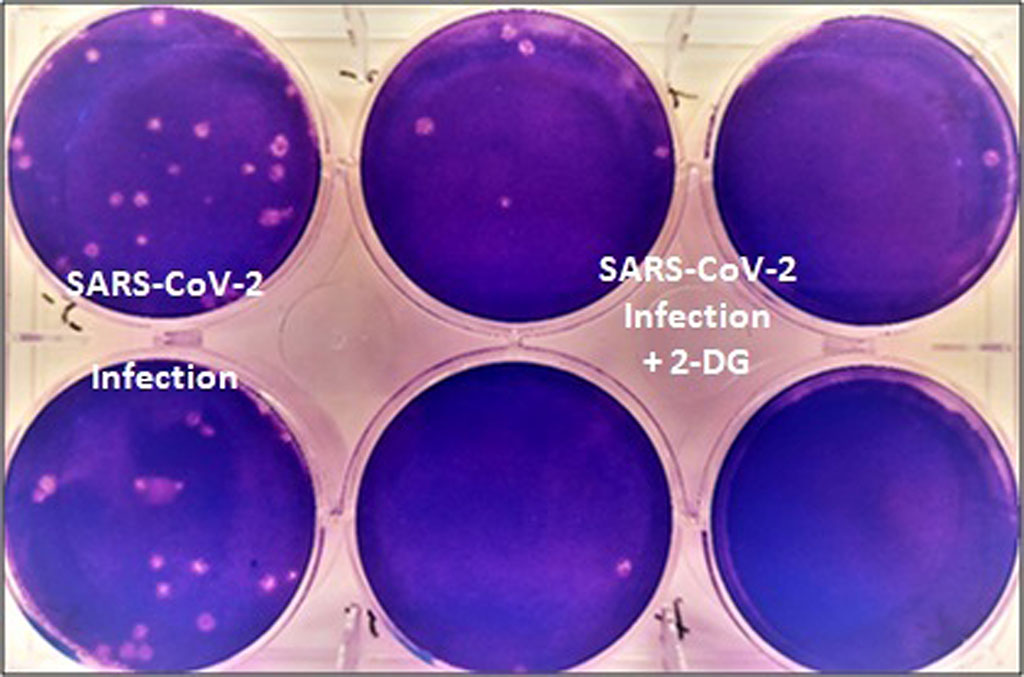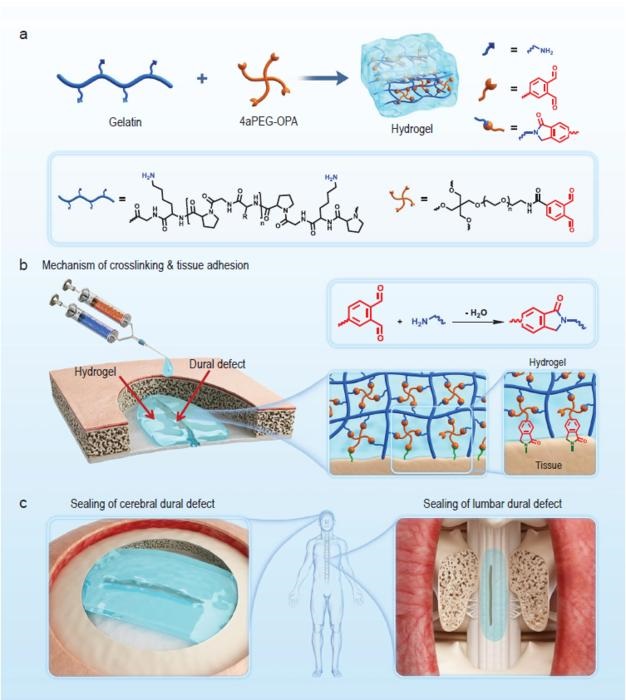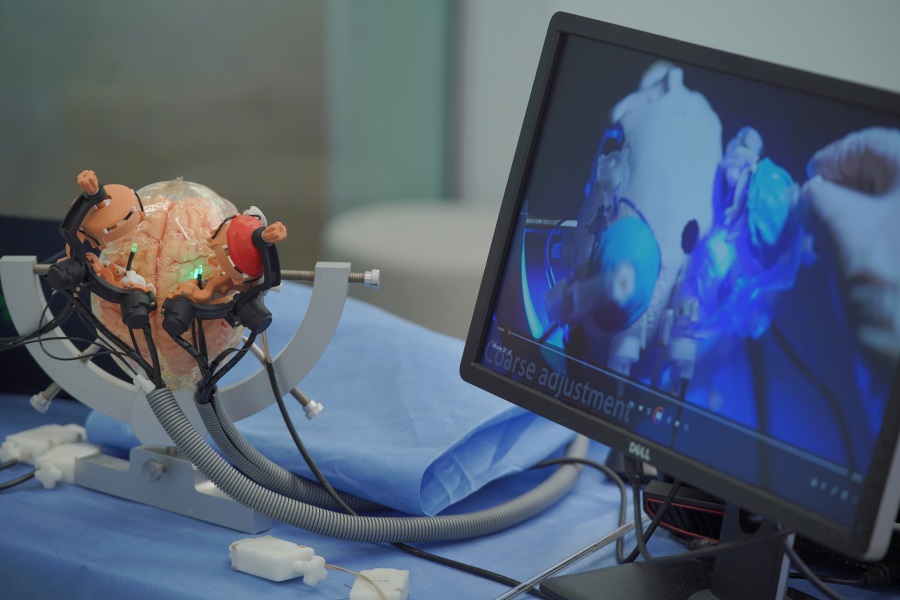Anti-COVID-19 Drug Helps in Faster Recovery of Hospitalized Patients and Reduces Supplemental Oxygen Dependence
|
By HospiMedica International staff writers Posted on 11 May 2021 |

Image: Anti-COVID-19 Drug Helps in Faster Recovery of Hospitalized Patients and Reduces Supplemental Oxygen Dependence (Photo courtesy of DNA India)
An anti-COVID-19 therapeutic application of the drug 2-deoxy-D-glucose (2-DG) has been shown to aid faster recovery of hospitalized patients and reduce supplemental oxygen dependence in clinical trials.
The anti-COVID therapeutic application of 2-DG has been developed by India’s Institute of Nuclear Medicine and Allied Sciences (INMAS), a lab of Defense Research and Development Organization (DRDO; Delhi, India), in collaboration with Dr. Reddy’s Laboratories (DRL; Hyderabad, India). A higher proportion of patients treated with 2-DG showed RT-PCR negative conversion in COVID-19 patients. The drug will be of immense benefit to people suffering from COVID-19.
In April 2020, INMAS-DRDO scientists had conducted laboratory experiments and found that the molecule worked effectively against SARS-CoV-2 virus and inhibited viral growth. Based on these results, the Phase 2 clinical trial of 2-DG was conducted in May 2020 to test the safety and efficacy of the drug in COVID-19 patients. In the Phase 2 trials (including dose ranging) involving 110 patients conducted during May to October 2020, the drug was found to be safe for COVID-19 patients who showed a significant improvement in recovery. The Phase 2a trial was conducted in six hospitals and Phase 2b (dose ranging) clinical trial was conducted at 11 hospitals across India.
In efficacy trends, the patients treated with 2-DG showed faster symptomatic cure than Standard of Care (SoC) on various endpoints. A significantly favorable trend (2.5 days difference) was seen in terms of the median time to achieving normalization of specific vital signs parameters when compared to SoC. Based on the successful results, the Phase 3 clinical trial was conducted on 220 patients between December 2020 to March 2021 at 27 COVID hospitals across several Indian states. In the 2-DG arm, a significantly higher proportion of patients improved symptomatically and became free from supplemental oxygen dependence (42% vs. 31%) by Day-3 in comparison to SoC, indicating early relief from oxygen therapy/dependence. A similar trend was observed in patients aged more than 65 years. On May 01, 2021, the DCGI granted permission for Emergency Use of the drug as adjunct therapy in moderate to severe COVID-19 patients.
Being a generic molecule and analogue of glucose, the drug can be easily produced and made available in plenty. The drug comes in a powder form in a sachet and is taken orally by dissolving it in water. It accumulates in the virus infected cells and prevents virus growth by stopping viral synthesis and energy production. Its selective accumulation in virally infected cells makes the drug unique. In the second COVID-19 wave, a large number of patients are facing severe oxygen dependency and need hospitalization. The drug is expected to save precious lives due to its mechanism of operation in infected cells and also reduce the hospital stay of COVID-19 patients.
Related Links:
DRDO
Dr. Reddy’s Laboratories
The anti-COVID therapeutic application of 2-DG has been developed by India’s Institute of Nuclear Medicine and Allied Sciences (INMAS), a lab of Defense Research and Development Organization (DRDO; Delhi, India), in collaboration with Dr. Reddy’s Laboratories (DRL; Hyderabad, India). A higher proportion of patients treated with 2-DG showed RT-PCR negative conversion in COVID-19 patients. The drug will be of immense benefit to people suffering from COVID-19.
In April 2020, INMAS-DRDO scientists had conducted laboratory experiments and found that the molecule worked effectively against SARS-CoV-2 virus and inhibited viral growth. Based on these results, the Phase 2 clinical trial of 2-DG was conducted in May 2020 to test the safety and efficacy of the drug in COVID-19 patients. In the Phase 2 trials (including dose ranging) involving 110 patients conducted during May to October 2020, the drug was found to be safe for COVID-19 patients who showed a significant improvement in recovery. The Phase 2a trial was conducted in six hospitals and Phase 2b (dose ranging) clinical trial was conducted at 11 hospitals across India.
In efficacy trends, the patients treated with 2-DG showed faster symptomatic cure than Standard of Care (SoC) on various endpoints. A significantly favorable trend (2.5 days difference) was seen in terms of the median time to achieving normalization of specific vital signs parameters when compared to SoC. Based on the successful results, the Phase 3 clinical trial was conducted on 220 patients between December 2020 to March 2021 at 27 COVID hospitals across several Indian states. In the 2-DG arm, a significantly higher proportion of patients improved symptomatically and became free from supplemental oxygen dependence (42% vs. 31%) by Day-3 in comparison to SoC, indicating early relief from oxygen therapy/dependence. A similar trend was observed in patients aged more than 65 years. On May 01, 2021, the DCGI granted permission for Emergency Use of the drug as adjunct therapy in moderate to severe COVID-19 patients.
Being a generic molecule and analogue of glucose, the drug can be easily produced and made available in plenty. The drug comes in a powder form in a sachet and is taken orally by dissolving it in water. It accumulates in the virus infected cells and prevents virus growth by stopping viral synthesis and energy production. Its selective accumulation in virally infected cells makes the drug unique. In the second COVID-19 wave, a large number of patients are facing severe oxygen dependency and need hospitalization. The drug is expected to save precious lives due to its mechanism of operation in infected cells and also reduce the hospital stay of COVID-19 patients.
Related Links:
DRDO
Dr. Reddy’s Laboratories
Latest COVID-19 News
- Low-Cost System Detects SARS-CoV-2 Virus in Hospital Air Using High-Tech Bubbles
- World's First Inhalable COVID-19 Vaccine Approved in China
- COVID-19 Vaccine Patch Fights SARS-CoV-2 Variants Better than Needles
- Blood Viscosity Testing Can Predict Risk of Death in Hospitalized COVID-19 Patients
- ‘Covid Computer’ Uses AI to Detect COVID-19 from Chest CT Scans
- MRI Lung-Imaging Technique Shows Cause of Long-COVID Symptoms
- Chest CT Scans of COVID-19 Patients Could Help Distinguish Between SARS-CoV-2 Variants
- Specialized MRI Detects Lung Abnormalities in Non-Hospitalized Long COVID Patients
- AI Algorithm Identifies Hospitalized Patients at Highest Risk of Dying From COVID-19
- Sweat Sensor Detects Key Biomarkers That Provide Early Warning of COVID-19 and Flu
- Study Assesses Impact of COVID-19 on Ventilation/Perfusion Scintigraphy
- CT Imaging Study Finds Vaccination Reduces Risk of COVID-19 Associated Pulmonary Embolism
- Third Day in Hospital a ‘Tipping Point’ in Severity of COVID-19 Pneumonia
- Longer Interval Between COVID-19 Vaccines Generates Up to Nine Times as Many Antibodies
- AI Model for Monitoring COVID-19 Predicts Mortality Within First 30 Days of Admission
- AI Predicts COVID Prognosis at Near-Expert Level Based Off CT Scans
Channels
Artificial Intelligence
view channel
AI-Powered Algorithm to Revolutionize Detection of Atrial Fibrillation
Atrial fibrillation (AFib), a condition characterized by an irregular and often rapid heart rate, is linked to increased risks of stroke and heart failure. This is because the irregular heartbeat in AFib... Read more
AI Diagnostic Tool Accurately Detects Valvular Disorders Often Missed by Doctors
Doctors generally use stethoscopes to listen for the characteristic lub-dub sounds made by heart valves opening and closing. They also listen for less prominent sounds that indicate problems with these valves.... Read moreCritical Care
view channel
AI Doubles Medical Professionals’ Accuracy in Reading EEG Charts of ICU Patients
Electroencephalography (EEG) readings are crucial for detecting when unconscious patients may be experiencing or are at risk of seizures. EEGs involve placing small sensors on the scalp to measure the... Read moreFlexible Device Enables Sweat Gland Stimulation and Simultaneous Biosensing
Human sweat is rich in biomarkers that can be used to monitor a range of health conditions, from diabetes to genetic disorders. Many users prefer sweat sampling over blood collection because it is painless.... Read more
WHO Publishes First Global Guidelines to Reduce Bloodstream Infections from Catheter Use
Up to 70% of all inpatients require a catheter, specifically a peripherally inserted catheter (PIVC), at some point during their hospital stay. Patients who receive treatments via catheters are particularly... Read moreSurgical Techniques
view channel
Study Warns Against Dangerous Smoke Levels Produced During Endoscopic Gastrointestinal Procedures
Healthcare professionals involved in certain smoke-generating endoscopic gastrointestinal procedures, such as those using electrical current to excise polyps, may be exposed to toxin levels comparable... Read more
New Hydrogel Sealant Effective at Sealing Dural Defects and Preventing Postoperative Adhesion
The dura mater is a fibrous membrane of connective tissue that envelops the brain and spinal cord. In neurosurgical procedures that require access to the brain or spinal cord, opening the dura mater often... Read more
MRI-Guided Multi-Stage Robotic Positioner Enhances Stereotactic Neurosurgery Precision
Magnetic resonance imaging (MRI) offers significant benefits in neurosurgery, providing detailed 3D visualizations of neurovascular structures and tumors. Traditionally, its use has been restricted to... Read morePatient Care
view channelFirst-Of-Its-Kind Portable Germicidal Light Technology Disinfects High-Touch Clinical Surfaces in Seconds
Reducing healthcare-acquired infections (HAIs) remains a pressing issue within global healthcare systems. In the United States alone, 1.7 million patients contract HAIs annually, leading to approximately... Read more
Surgical Capacity Optimization Solution Helps Hospitals Boost OR Utilization
An innovative solution has the capability to transform surgical capacity utilization by targeting the root cause of surgical block time inefficiencies. Fujitsu Limited’s (Tokyo, Japan) Surgical Capacity... Read more
Game-Changing Innovation in Surgical Instrument Sterilization Significantly Improves OR Throughput
A groundbreaking innovation enables hospitals to significantly improve instrument processing time and throughput in operating rooms (ORs) and sterile processing departments. Turbett Surgical, Inc.... Read moreHealth IT
view channel
Machine Learning Model Improves Mortality Risk Prediction for Cardiac Surgery Patients
Machine learning algorithms have been deployed to create predictive models in various medical fields, with some demonstrating improved outcomes compared to their standard-of-care counterparts.... Read more
Strategic Collaboration to Develop and Integrate Generative AI into Healthcare
Top industry experts have underscored the immediate requirement for healthcare systems and hospitals to respond to severe cost and margin pressures. Close to half of U.S. hospitals ended 2022 in the red... Read more
AI-Enabled Operating Rooms Solution Helps Hospitals Maximize Utilization and Unlock Capacity
For healthcare organizations, optimizing operating room (OR) utilization during prime time hours is a complex challenge. Surgeons and clinics face difficulties in finding available slots for booking cases,... Read more
AI Predicts Pancreatic Cancer Three Years before Diagnosis from Patients’ Medical Records
Screening for common cancers like breast, cervix, and prostate cancer relies on relatively simple and highly effective techniques, such as mammograms, Pap smears, and blood tests. These methods have revolutionized... Read morePoint of Care
view channel
POCT for Infectious Diseases Delivers Laboratory Equivalent Pathology Results
On-site pathology tests for infectious diseases in rural and remote locations can achieve the same level of reliability and accuracy as those conducted in hospital laboratories, a recent study suggests.... Read more
Cartridge-Based Hemostasis Analyzer System Enables Faster Coagulation Testing
Quickly assessing a patient's total hemostasis status can be critical to influencing clinical outcomes and using blood products. Haemonetics Corporation (Boston, MA, USA) has now obtained 510(k) clearance... Read more
Critical Bleeding Management System to Help Hospitals Further Standardize Viscoelastic Testing
Surgical procedures are often accompanied by significant blood loss and the subsequent high likelihood of the need for allogeneic blood transfusions. These transfusions, while critical, are linked to various... Read moreBusiness
view channel
MEDICA INNOVATION FORUM for the Healthcare Innovations of the Future
By always offering innovations and updating existing program formats, the internationally leading medical trade fair MEDICA in Düsseldorf has been successful for over half a century and always gives its... Read more

















